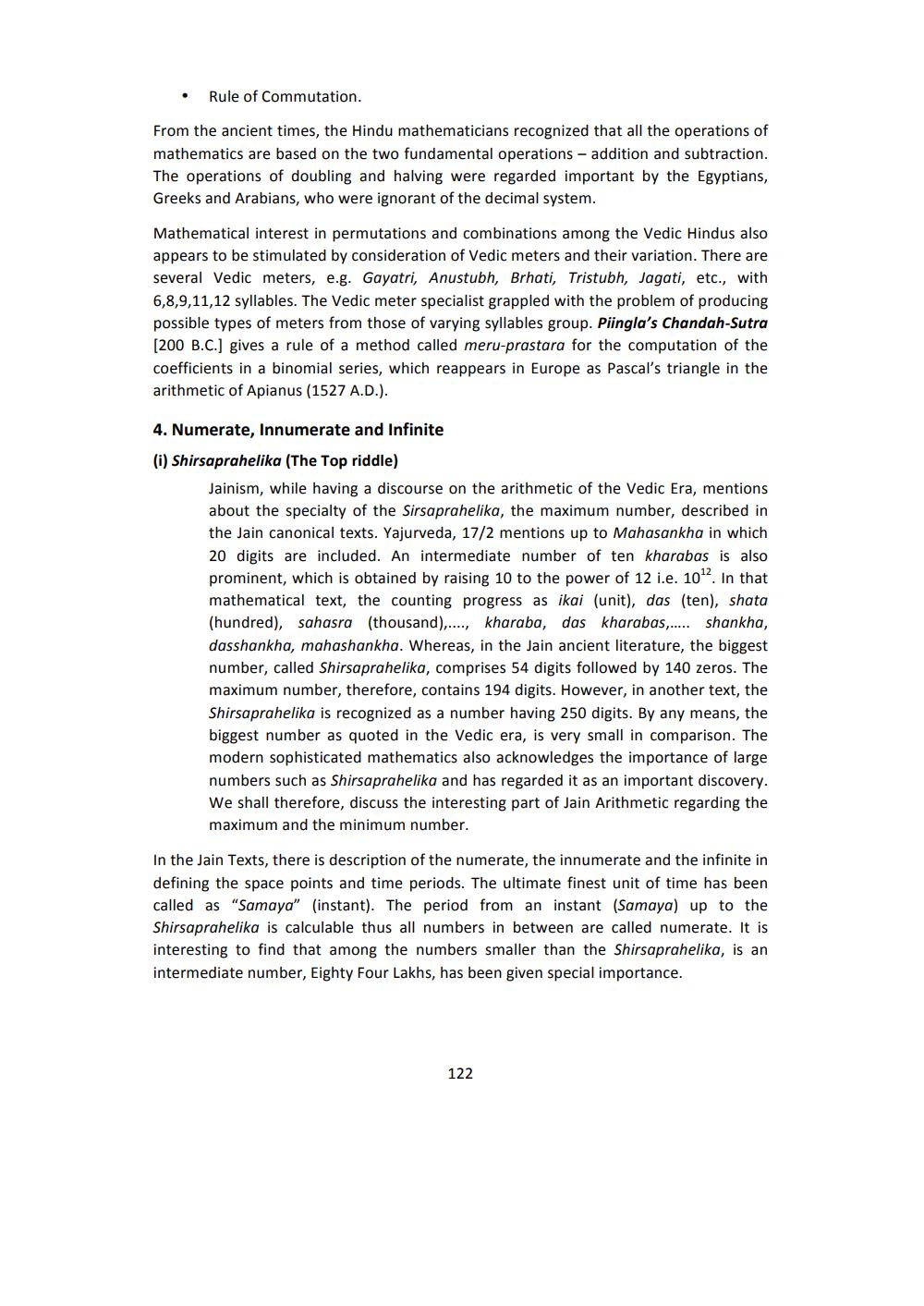________________
Rule of Commutation.
From the ancient times, the Hindu mathematicians recognized that all the operations of mathematics are based on the two fundamental operations - addition and subtraction. The operations of doubling and halving were regarded important by the Egyptians, Greeks and Arabians, who were ignorant of the decimal system.
Mathematical interest in permutations and combinations among the Vedic Hindus also appears to be stimulated by consideration of Vedic meters and their variation. There are several Vedic meters, e.g. Gayatri, Anustubh, Brhati, Tristubh, Jagati, etc., with 6,8,9,11,12 syllables. The Vedic meter specialist grappled with the problem of producing possible types of meters from those of varying syllables group. Piingla's Chandah-Sutra [200 B.C.] gives a rule of a method called meru-prastara for the computation of the coefficients in a binomial series, which reappears in Europe as Pascal's triangle in the arithmetic of Apianus (1527 A.D.).
4. Numerate, Innumerate and Infinite
(i) Shirsaprahelika (The Top riddle)
Jainism, while having a discourse on the arithmetic of the Vedic Era, mentions about the specialty of the Sirsaprahelika, the maximum number, described in the Jain canonical texts. Yajurveda, 17/2 mentions up to Mahasankha in which 20 digits are included. An intermediate number of ten kharabas is also prominent, which is obtained by raising 10 to the power of 12 i.e. 1012. In that mathematical text, the counting progress as ikai (unit), das (ten), shata (hundred), sahasra (thousand),...., kharaba, das kharabas,..... shankha, dasshankha, mahashankha. Whereas, in the Jain ancient literature, the biggest number, called Shirsaprahelika, comprises 54 digits followed by 140 zeros. The maximum number, therefore, contains 194 digits. However, in another text, the Shirsaprahelika is recognized as a number having 250 digits. By any means, the biggest number as quoted in the Vedic era, is very small in comparison. The modern sophisticated mathematics also acknowledges the importance of large numbers such as Shirsaprahelika and has regarded it as an important discovery. We shall therefore, discuss the interesting part of Jain Arithmetic regarding the maximum and the minimum number.
In the Jain Texts, there is description of the numerate, the innumerate and the infinite in defining the space points and time periods. The ultimate finest unit of time has been called as "Samaya" (instant). The period from an instant (Samaya) up to the Shirsaprahelika is calculable thus all numbers in between are called numerate. It is interesting to find that among the numbers smaller than the Shirsaprahelika, is an intermediate number, Eighty Four Lakhs, has been given special importance.
122




